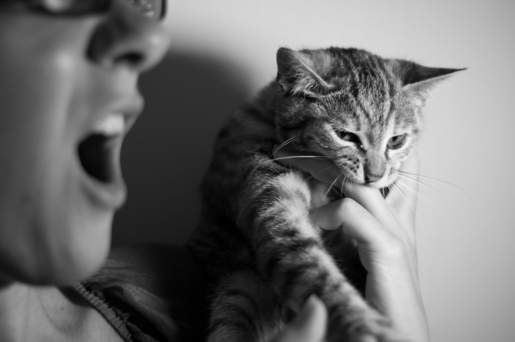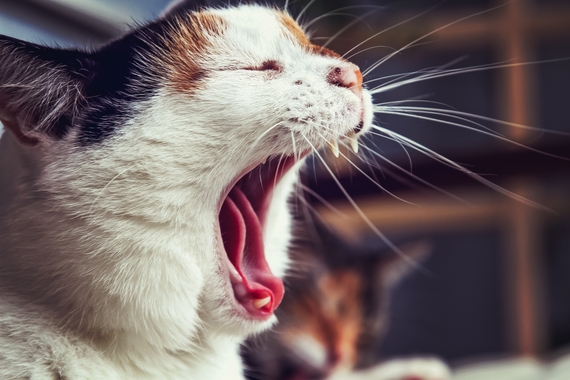First, How dirty are cats mouths in general?
A cat’s microbial mouth flora is very different from flora in a human mouth. University of Oklahoma College of Medicine has performed a study about comparing oral flora of humans, dogs, and cats. The conclusion was that out of the three, cats had the highest number of bacteria in their mouths. Cats’ mouths contain also bacteria called Pasteurella multocida which can cause infections in humans.
The link to the study is here.
Is a cat’s tongue clean?
No, as stated above, a cat’s mouth contains a bacteria Pasteurella multocida which is dangerous to humans. Cats also used to use their tongues to groom themselves so it contains all the bacteria they may have on their fur.
Does cat saliva heal wounds?
No, cat’s and dog’s saliva can be really dangerous to humans. The mouth of a cat contains hundreds of types of bacteria. Dr. Floyd Dewhirst stated on National Geographic that most of these bacteria types are unfamiliar to our immune system. Many of them can cause serious infections if they get to your blood.
Neither cat’s nor dog’s tongue can heal. Especially open wounds.
In fact if you let your cat lick your wounds you can get sick from his saliva.
There are legends about how good it is to have your wound licked by your favorite pet. I even read somewhere the story about Julius Caesar who allegedly employed a large number of dogs to lick the wounds of soldiers in his army. If that was the case – don’t follow this example. Ancient people have also worshiped the sun, I guess you don’t think it’s a good idea because of that?
Is it safe to kiss your cat?
No, due to a large number of bacteria you should avoid kissing your cat. The biggest risk is associated with kissing a cat on the lips. It’s due to a large number of bacteria which is unfamiliar to the human immune system. Kissing a cat on fur can also expose you to contact with the cat’s microbial mouth flora, especially shortly after a cat has groomed itself.
The most common bacteria types you can get from your cat (and other household animals) include:
- Pasteurella
- Staphylococcus
- E-coli
- Salmonella
I know what you think.
C’mon I can’t kiss my own cat? Even on fur? My cat is clean. I’ve kissed him many times and nothing has ever happened to me!
Yeah, like with many other things – nothing happens until it happens. The risk may not be super high but it’s real. There was a study where experts found almost one million of living bacteria in each gram of cat fur. Of course, you are an adult and the risk is not super high so if you can’t help yourself and absolutely have to kiss your cat then at least:
- Avoid kissing your cat on the lips
- Avoid kissing your cat on fur shortly after he groomed himself
- Wash your lips after doing so
- Never let your cat (or dog) lick your open wounds
Is it easy to catch toxoplasmosis from cats?
This one is probably the one you should not worry about too much. Unless you like to examine your cat’s poop in very close detail.
Getting toxoplasmosis from a cat is very unlikely. Toxoplasmosis is not spread by fur or saliva. It’s spread by having contact with a cat’s faecals. Moreover, a cat’s faecals can contaminate humans and other animals only in the first 2-3 weeks after a cat was first infected. It’s much more likely that you get toxoplasmosis by eating undercooked infected meat.
It’s also worth to note that indoor cats ar much less likely to have this parasite.
What percent of cat owners have toxoplasmosis?
According to Association of American Veterinary Medical Colleges more than 60 million people in the United States carry the Toxoplasma parasite. Other resource, New York Times stated that about 20 percent of the American people are infected. Also, other resources are stating that 30% to 50% of the total world population was already exposed to this parasite and they may already have antibodies for it.
I know, this may sound like a lot but remember that for most healthy, adult people this parasite will not cause serious negative impact on their health. For many of them it may even go unnoticed. Having that said, you should still be very carefull for children and for people with general problems with their immune system.
Can you get infected by a cat bite?

Yes. According to the Report of the Comittee on Infectious Diseases from 2015, as many as 50% of all cat bites end up with infection. To compare, only 10% to 15% of all dog bites end up with infection but dogs are responsible for about 90% of all bite wounds in the United States.
Is it realy that bad? Half of all the cat bites end up with infection?
Unfortunatelly yes. Cats have very small teeth and they can inject the bacteria into your body very effectively. Dr. Sam Campbell compares it to being stabbed with an infected needle. The bacteria which is the most dangerous in the context of a cat bite is the one I already mention before – Pasteurella multocida.
Should I go to the doctor for a cat bite?
Yes, you should. First because of a high risk of being infected (about 50% for a cat bites), and second because infections that are coming from animal bites tend to progress much faster than the average. An infected person will usually see some swelling and red color around the bite area in about 24 hours. If you observe that on your wound it’s time to see a doctor.
Certainly you shoudn’t wait if you have been biten in the hand. Hand infections can be even more serious as they can get into the tendon area.
The outcome is very rerely fatal, but do not underestimate a cat’s bite just because it’s small. Consequences can still be very serious.
Do I need antibiotics for a cat bite?
If the wound is infected then yes, but you should consult that with a doctor. In most cases you will receive a simple antibiotic treatment which will be more than enough.

